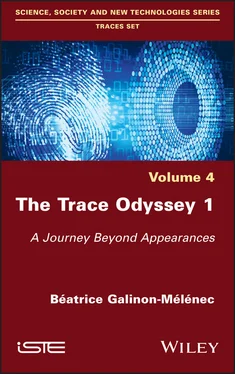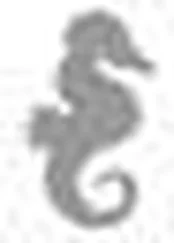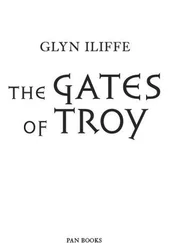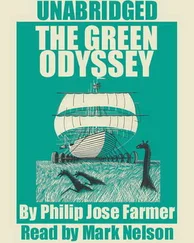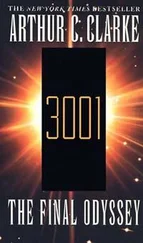12 12 We see later ( Chapter 2of Volume 1), how data is constructed and how it circulates in a viral way, by following the path that leads them to various computer hosts willing to receive them. This multiplier effect produces an exponential storage of data where privacy-invasive connections can be established. This risk leads users to demand the right to keep a private space that is not subject to digital capture, the possibility of access, rectification and opposition to data processing.
13 13 That conception is specific to Galinon-Mélénec’s paradigm of Ichnos-Anthropos and is not exactly equivalent to general uses of “trace”.
14 14 The respondent/investigator relationship is likely to influence the respondent’s responses.
15 15 “[...] this distinction disappears if we consider that at the origin of these two fields is that of theoretical computer science, an autonomous scientific field constituted by the articulation of discrete mathematics, and the logical theory of computability” (Lassègue 1995, p. 21–65, author’s translation).
16 16 By “reality” we mean that which is within the realm of formal human knowledge. In this sense, “reality” can be formally differentiated from the “Real”, with a capital “R”, whereby it is axiomatically assumed that phenomena exist, that are ultimately outside the reach of human knowledge.
17 17 The living cannot be reduced to human beings. Living beings existed before humans, such as triploblastic animals (e.g. worms) and chordates (vertebrates and invertebrates).
18 18 See Chapter 4, Figure 4.4.
19 19 From our point of view, it would be more accurate to say: How Real is Reality.
20 20 Sign: all that can fall within the compass of human understanding. The field of semiotics investigates the nature of signs and the laws that govern them. For example, Jacques Derrida affirms that the signifier and the signified are not fixed. He invented the expression differance to signify the endless postponement of meaning according to their readings in context. For us, there is no sign emerging outside of the conséquence-trace interaction processes between a human-trace in context and a reality-trace.
21 21 See Galinon-Mélénec (2008).
22 22“At one level, words mean one thing, while at another level, something quite different is communicated” (Hall 1984).
23 23Digital and paper writing processes differ in many aspects. We note here that a spell-checking or synonym selection algorithm automatically intervenes in digital writing and in translations. It is therefore advisable to enrich this database with useful nuances to avoid confusions that are harmful to communication.
24 24 Milieu refers to the immediate physical and social setting in which anyone lives, or in which something happens or develops. In the rest of the book, we explain, in more detail, the difference between milieu and environment.
25 25 Definitions are provided in the footnotes in each case.
26 26 See Chapter 5for the evolution of the definitions after the different steps (corresponding to chapters) of The Trace Odyssey 1.
27 27According to the French dictionary Le Robert, the term “imprint” initially derives from the Latin impremere “to press”, that initially (1250) meant “to mark by pressure on a surface” in Rey and Hordé (2006).
28 28E.g. this is how computer scientists talk about digital “footprints”; footprints in snow or sand. Hollywood Boulevard is inlaid with handprints and footprints of famous people.
29 29From its first reference, the word “mark” designates a sign deliberately put on an object to make it recognizable, indicating its main property. See Rey and Hordé (2006).
30 30E.g. (a) this style is the mark of a great couturier; (b) this adult’s behavior contains the typical markers of a trauma suffered in childhood; (c) from the smell of the perfume, a “nose” identifies Chanel No. 5.
31 31The word indice was originally associated with the Latin meaning for “denunciation”. Today, it also evokes an apparent sign that indicates something with probability, and then a known fact that constitutes evidence by presumption. It is also associated with the term “index”, which itself means to show, to indicate with the index (finger), a catalogue, a list. See Rey and Hordé (2006).
32 32Sometimes associated with a faint trace, or one that is imperceptible to the eyes of most people (but that is visible to this or that expert).
33 33E.g. police investigations or medical diagnoses (in the symptom chart, the “indices” are associated with an illness).
34 34 Note, with Paul Watzlawick, that in a retroactive, circular and open system “[...] the same consequences may have different origins” (Watzlawick et al. 1979, author’s translation).
35 35 See Figure I.1.
36 36 For example, those whose main purpose is the phenomenon of “information”. Note that, for our part, we will not use the term “track” (Leleu-Merviel 2018), which in its modern sense means pursuing animals without leaving them with a way out (18th Century), and more recently (1945), in the figurative sense, “pursuit, manhunt”, even though in the police context, which we often refer to, the term could sometimes be perfectly suitable (Le dictionnaire historique de la langue française, op. cit., p. 3899).
37 37 Freely illustrated from the situation described by Watzlawick et al. (1979, p. 95).
38 38 For the importance of attention in understanding and memorizing perceptions, see Jacquet-Andrieu (2012, pp. 60–69).
39 39 Translated from the English (United States) and edited by Claudine Tiercelin and Pierre Thibaud.
40 40 Processus traçuels: author’s own terminology (= trace-process).
41 41 Axioms: initial statements that serve as a starting point for observations and analyses of the paradigm (or theory) presented.
42 42 Derrida (1974).
43 43 Perrier (2014) in Petit et al. (2014).
44 44Bateson, Goffman, Hall, Watzlawick, texts in French collected by Yves Winkin in La Nouvelle communication, Paris, Seuil, Poche, 1984.
45 45 This starts from the maternal cytoplasm and does not exclude epigenetic traces of the lineage.
46 46 As was previously mentioned, when a semiotic process occurs it is because one goes from what one defines as the Real to what one defines by the term reality.
47 47 In semiotics, “the body is not one field of analysis among others. The embodiment of signifying processes provides them with a substratum that imposes itself on all cognitive and emotional elaborations: interacting bodies preserve in their flesh or on their body the imprints of these interactions, and it is these imprints that must be identified, extracted, deciphered and interpreted” (Fontanille 2011).
48 48 A.J. Greimas in “l’être-là”, a presence in the world that identifies itself in part with the concept of semiotic existence (Greimas 1993, p. 290).
49 49 According to Tetsurō Watsuji, op. cit.
50 50 This proposal stems from relatively recent epigenetic research that we presented in the series L’Homme-trace published by CNRS Éditions (see Galinon-Mélénec (2011)). Epigenetics is not the only approach. Psychology also questions related issues by discussing the idea of the transgenerational. Interdisciplinary can be established on the basis of the following definitions: “trans-from the Latin trans (beyond), a prefix that enters into the composition of a certain number of words, to add to their meaning the idea of “beyond”, “through”, etc.; generational, what is specific to a generation and to relations between generations, humans”. See É. Littré, Dictionnaire de la langue française, volume 7, p. 1220.
51 51 To take “white for black” is an expression by Joachin du Bellay’s, who already stated it in 1549, in Chapter 6 of La Défense et l’illustration de la langue française (about translators, but this also applies to reading – which as we shall see later, is a “lettrure”).
Читать дальше
